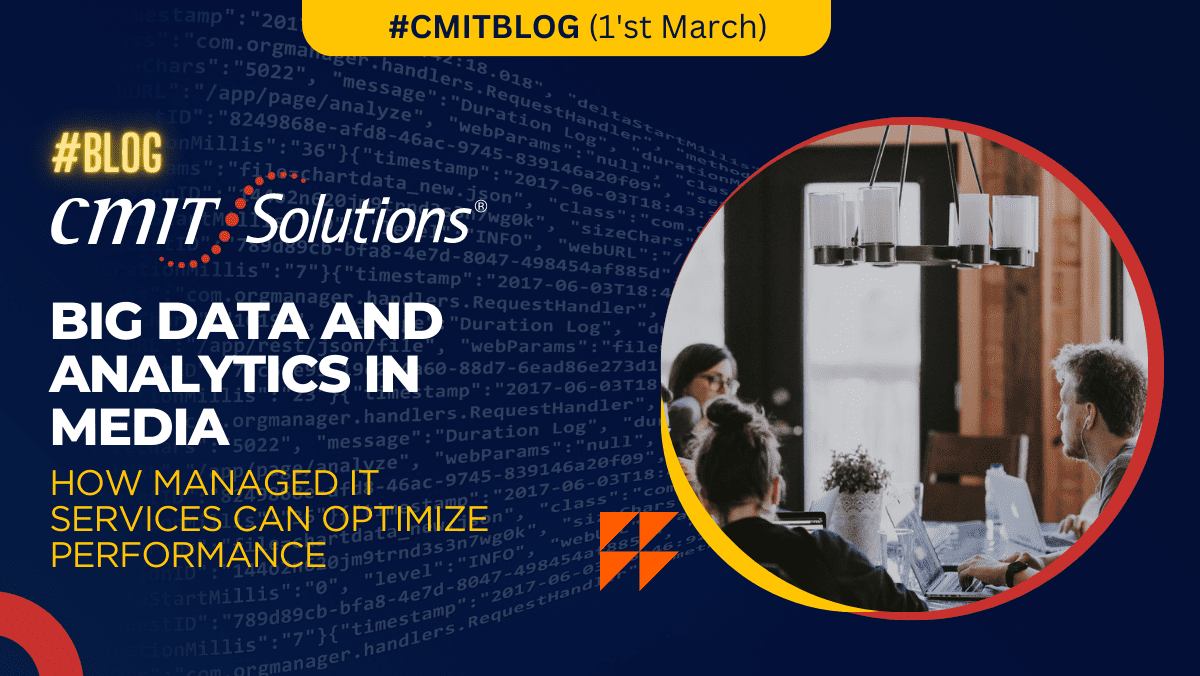In today’s media landscape, data is king. Thanks to the rise of big data and analytics, companies are now able to harness vast amounts of information about their audiences, content performance, and much more. However, managing all that data can be overwhelming without a proper strategy in place. That’s where managed IT services come in – by leveraging the latest technology and expertise from professionals who know how to make sense of it all. In this blog post, we’ll explore how managed IT services can help optimize your media company’s performance through big data and analytics integration!
What are big data and analytics?
Big data and analytics have become one of the most important tools in media today. By analyzing large sets of data, businesses can optimize their performance by making better decisions, improving customer experiences, and reducing costs.
Managed IT services can help businesses take advantage of big data and analytics by providing the infrastructure and expertise necessary to effectively collect, store, and analyze data. In addition, managed IT services can help businesses keep pace with the ever-changing landscape of big data and analytics by providing ongoing support and advice.
How can managed IT services help with big data?
As the world of media becomes increasingly digitized, so too does the landscape of big data and analytics. This can be both a blessing and a curse for businesses in the media industry, as they must now contend with ever-growing mountains of data. But with the help of managed IT services, businesses can take advantage of this data and use it to improve their performance.
Managed IT services can help businesses in the media industry to optimize their big data analytics in several ways. First, they can provide the necessary infrastructure and support to ensure that data is collected and stored efficiently. They can also help to design and implement custom applications and dashboards that make it easy for businesses to visualize and analyze their data. Finally, managed IT services can provide ongoing support and maintenance to keep everything running smoothly.
In today’s competitive media landscape, those who can make use of big data will have a major advantage over those who do not. With the help of managed IT services, businesses can get the most out of their big data analytics and use it to improve their performance.
What are some benefits of using big data in media?
Data-driven media organizations can make real-time decisions that improve content, better engage audiences, and boost advertising sales. Here are some benefits of using big data in media:
1. Increase revenues: Data can be used to identify new revenue streams and optimize existing ones. For example, by understanding how users interact with your content, you can develop targeted advertising that generates more revenue.
2. Improve content: Big data can help media organizations understand what type of content is most popular with their audience. This information can be used to create better content that engages readers and keeps them coming back for more.
3. Enhance audience engagement: By understanding how your audience consumes content, you can develop strategies to keep them engaged. This might include developing personalized content recommendations or providing interactive features that encourage reader participation.
4. Boost efficiency: Big data can help media organizations streamline their operations and reduce costs. For example, by analyzing website traffic data, you can identify areas where your site is slow or inefficient and make changes to improve performance.
How can big data be used to improve performance?
In recent years, big data has become a major buzzword in the business world. But what is big data, and how can it be used to improve performance?
Big data refers to large sets of data that can be analyzed to reveal trends and patterns. This data can come from a variety of sources, including social media, transaction records, and web clickstreams.
Big data analytics can help organizations improve their performance in several ways. For example, it can be used to identify new market opportunities, track customer behavior, optimize marketing campaigns, and improve operational efficiency.
Managed IT services can play a critical role in helping organizations harness the power of big data. By partnering with a managed IT service provider, businesses can gain access to the latest analytical tools and expertise needed to make sense of their data and drive real-world results.
The Challenges of managing Big Data
The challenges of managing Big Data are numerous and varied. Perhaps the most obvious challenge is simply the sheer volume of data that must be managed. This can make even basic tasks, such as data entry and retrieval, extraordinarily time-consuming and difficult.
Another common challenge is ensuring that all of the data is accurate and up-to-date. With so much data to keep track of, it is easy for mistakes to slip through the cracks. This can lead to serious problems down the line when inaccurate data is used to make important decisions.
Finally, managing Big Data also requires a great deal of storage space. Not only must all of the data be stored safely and securely, but it must also be organized in a way that makes it easy to find and use when needed. This can be a significant challenge for organizations that do not have a lot of physical space to work with.
Conclusion
In conclusion, big data and analytics in the media industry can be a highly beneficial sources of information that can help optimize performance. With managed IT services, businesses can leverage this data to gain competitive advantages and improve their overall results. Managed IT service providers have the expertise and experience necessary to ensure that an organization’s systems are optimized for maximum efficiency and productivity. By utilizing these services, businesses will have access to tools such as predictive analytics, which will give them insight into current trends and future outcomes. Ultimately, this type of technology has revolutionized the way we look at business operations today – making it easier than ever before for companies to maximize returns on their investments by capitalizing on opportunities presented through data-driven insights.





